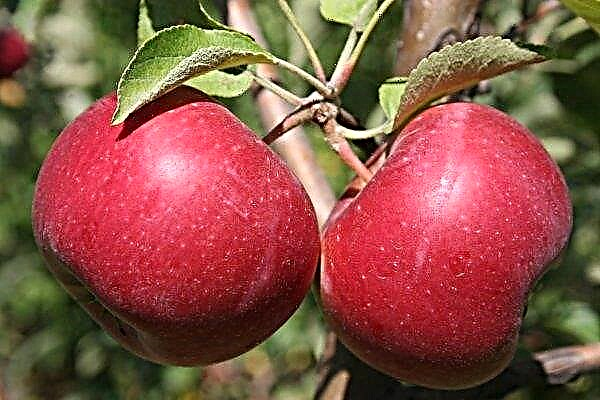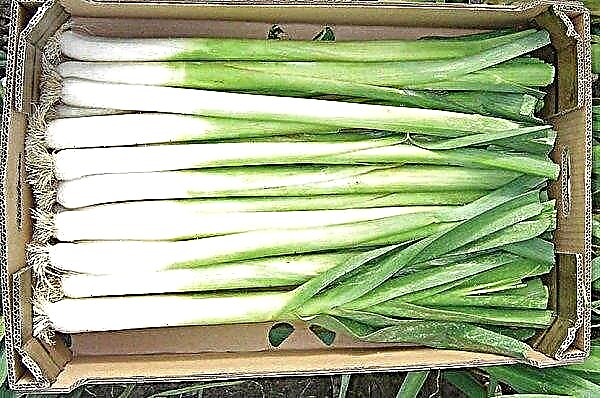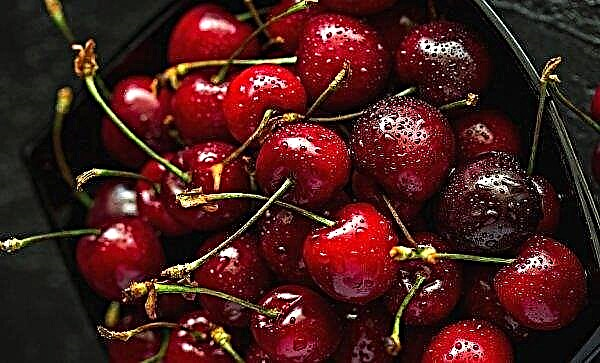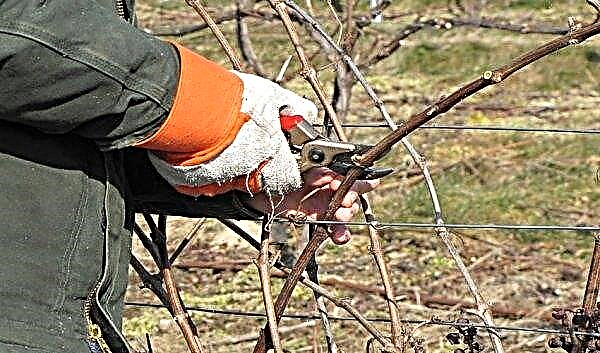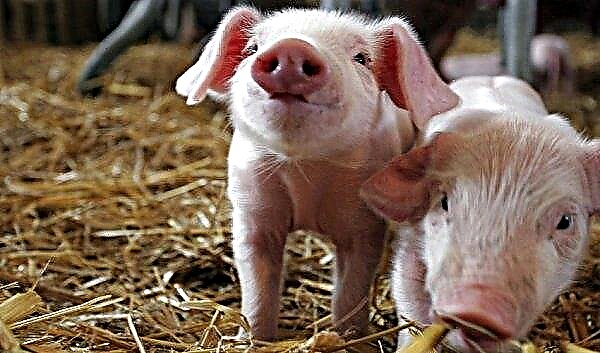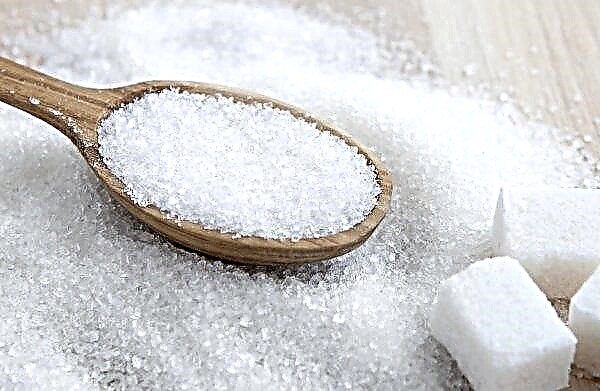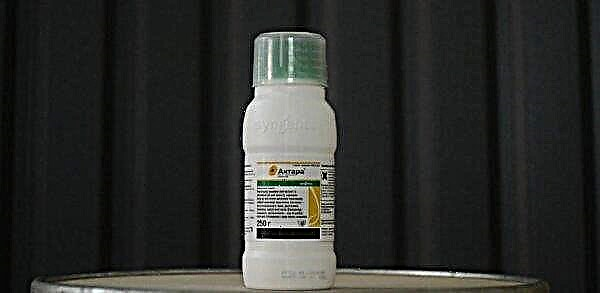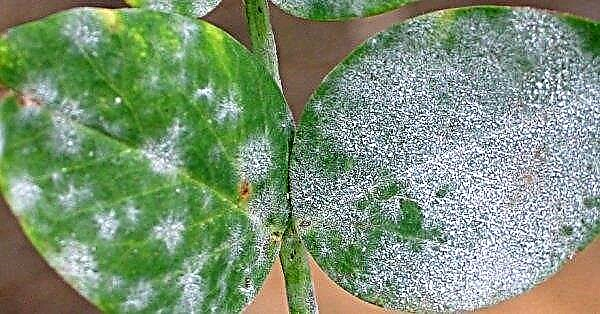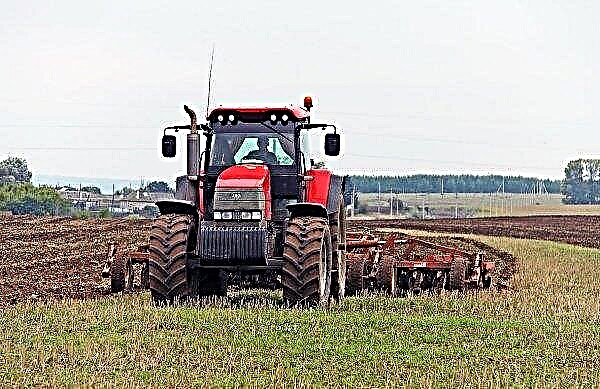Eggplant demanding environmental conditions. If they deviate greatly from the optimal regime, then you can generally be left without a crop. We learn what can cause lack of ovary in eggplant, how to fix this situation, what measures to take to set fruit.
What is the ovary for and what is it
The ovary is formed from the lower part of the pestle and serves as a container and protection for the ovule. It moisturizes seeds, helps them withstand temperature changes, isolates from insects.
Did you know? Eggplant is a low-calorie vegetable that positively affects metabolism. It will be useful on menus for people who want to lose weight, and for diabetics.
The main reasons for the lack of ovaries in eggplant
In blue ones, an ovary is formed inside a bisexual flower. The flowers of this culture are not always tied - the overwhelming part of the color falls off. An ordinary bush does not form more than 15 preserved ovaries. Of these, depending on the variety, berries grow in weight from 40 g to 1 kg and most often a dark purple color. It often happens that a plant has grown and is blooming, but there are no fruits at all or too few. Consider the most common causes of this phenomenon.
Temperature violation
Optimum temperatures for blue are + 25 ... 27 ° С. Its lowering below + 15 ° C leads to fading vegetation and shedding of color. This often happens when the seedlings are planted in open ground, and there has been a cooling. The plant does not die, but the color and ovaries fall. Not the best situation occurs when the heat is above + 32 ° C. Pollen becomes sterile at too high temperatures, and the barren flower falls over time. Such a hot temperature is often achieved in greenhouses, which they forgot to open for ventilation during the day.
Not the best situation occurs when the heat is above + 32 ° C. Pollen becomes sterile at too high temperatures, and the barren flower falls over time. Such a hot temperature is often achieved in greenhouses, which they forgot to open for ventilation during the day.
The capricious eggplant does not tolerate stress well - sudden changes in temperature, drafts make it shed its ovary.
Wrong watering
Eggplants are hygrophilous and poorly tolerate a lack of water. Their large leaves intensively evaporate moisture, and the plant requires stable watering. In the period of fruit set and growth, soil moisture should be at the level of 75–80%. Even short-term drying of the earth causes dropping of flowers and ovary.
Strong waterlogging, especially in cool weather, increases the falling of the ovary.
Important! It is necessary to water the eggplant with defended heated water, and not from the well. Watering cold water is stressful for them.
Fertilizer
Eggplants prefer nutritious light soils. A lack of minerals can cause a lack of ovary. A lack of phosphorus and trace elements (most often boron or magnesium) has a particularly negative effect on fruit set.
Excess nitrogen
An excessive amount of nitrogenous fertilizers can cause a situation when plants are formed with a large green mass and rarely bloom, and this color remains without an ovary. Nitrogen is good in the initial stage of vegetation, for seedlings, but not during flowering. Before flowering, its part is reduced, and the doses of potassium and phosphorus are increased.
Excess pollen
Eggplant flowers are self-pollinated, but the fact is that too much pollen is formed and it sticks together. Especially often this happens in the humid environment of greenhouses. Optimum conditions are created for the plant, it blooms, but the fruits are still not tied. In this case, you need to help the process mechanically.

Troubleshooting
If there is a problem of lack of ovary on the eggplant bushes, you can resort to the use of appropriate funds. To solve this problem, drugs such as Bud, Gibbersib, and Epin successfully help. Due to the content of phytohormones in them, the plant culture receives good growth and development. A plant can produce such a hormone on its own, but only if all the necessary conditions for cultivation are met - watering, temperature, lighting, ensuring the supply of all nutrients.
In the case when the ovary is poorly formed due to excess nitrogen in the soil, it is necessary to apply potash and phosphorus fertilizers - they will reduce the harmful effects of nitrogen. With a lack of boron and magnesium, which can slow down the process of ovary formation, it is necessary to carry out foliar dressing with a solution of boric acid, as well as magnesium sulfate.A spray solution can be prepared independently as follows - 1 g of boric acid is diluted in 1 liter of hot water, then poured into a 10 liter bucket of water and another 1 g of magnesium sulfate is thrown. You can also feed using complex preparations such as "Agricola" or "Kemira." In a 10 liter bucket, dilute 20 g of such a drug and spray the bushes.
If pests are found on the bushes, it is imperative to take measures to combat them. After all, Colorado beetles and their larvae, as well as aphids, can damage the buds, which will lead to the absence of an ovary. Pests can be collected manually, or you can use chemicals such as Confidor, Arrow.
Did you know? There are varieties of eggplant with a mushroom flavor. They usually have a non-standard color. Varieties such as Taste of mushrooms (white color), Emerald and Zelenenky (green peel) are presented on our market.
Preventative measures
Important factors for the formation of the ovary is prevention, which consists in observing all the rules of agricultural technology and conditions when growing a crop.
To form a good ovary in eggplant gardeners recommend the following preventive measures:
- Soil analysis. This plant crop does not tolerate dense, marshy, cold soil. The soil should be light and saturated with organic matter, have a neutral reaction. In greenhouse conditions, they prepare the soil for planting, observing the proportions - 1 part of turf, 2 parts of humus.
- For planting in open ground, you need to choose a well-lit area. In the shadow of the blue crop you will not wait - this culture does not bear fruit in the absence of light.
- Provide good pollination. It is recommended to shake the bushes periodically, especially if they grow in a greenhouse. You can even conduct the pollination process yourself. To do this, transfer pollen from one flower to the pistils of other buds with a brush. For pollination, it is better to choose a recently blossomed bud.
- Observe crop rotation. You can not plant on a site where the solanaceous ones (tomatoes, potatoes, physalis) were the predecessors.
- Quality seed. You need to choose zoned varieties to avoid the appearance of various plant diseases.
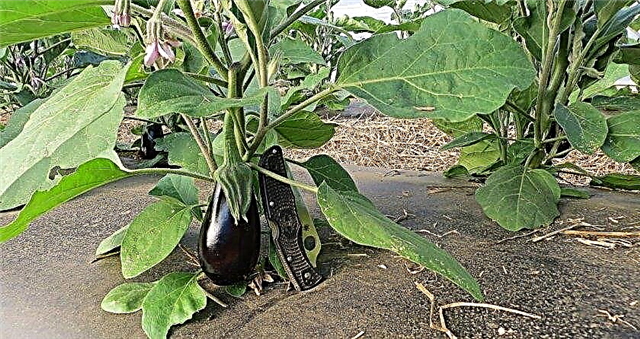
- Form bushes properly. It should be removed bad ovary and leaves that obscure the buds. Such leaves need to be chopped off in small quantities.
- Remove yellowed leaves, as well as the remnants of the corolla from the flower, since over time it begins to rot and can cause rotting of the fetus.
- Stick to recommended temperature. In the event of a drop in temperature, especially at night, use covering material. Ventilate the greenhouse when it is hot, and close when it is cold. In the heat, do cooling surface irrigation.
- Proper watering at least 1 time per week. About 1 liter of liquid should be included per 1 m² of planting. In the heat, water 2 times a week.
- Regularly cultivate and remove weed. In this case, you must try not to damage the roots of the plant.
- Feed at least 3 times during the growing season. After 14 days, the first time (fertilizers with nitrogen content), then during the flowering period (complex fertilizers), the last top dressing during fruiting (phosphorus-potassium fertilizers). It is best to use complex fertilizers for top dressing, which contain not only macroelements, but also microelements.
It is possible to force the eggplant to bear fruit, the main thing is to determine the cause of the absence of the ovary and take measures. It is best to carry out prophylaxis in advance.Important! In the area where the eggplants were previously grown, they can be planted again only after at least 3 years.


